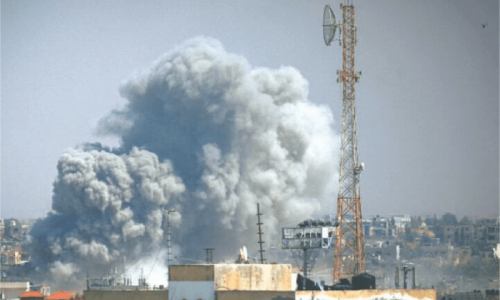Despite steps, here and there, headwinds continue to impact the ‘crude’ outlook.
In a clear sign, Chevron is writing down $11 billion in assets. Supply surpluses, low prices, ongoing shale revolution and the looming threat of peak demand are enough to give the oil markets a gloomy picture.
The Chevron write-down comes amid its lowered long-term oil and gas prices forecast. “We have to make tough choices to high-grade our portfolio and invest in the highest-return projects in the world, we see ahead of us, and that’s a different world than the one that lies behind us,” Chevron CEO Mike Wirth said in a Wall Street Journal (WSJ) interview.
Last month, Chevron reported a 36 per cent drop in third-quarter profits.
The WSJ says the admission that assets worth billions of dollars’ worth are worth a lot than previously thought could force others to “publicly reassess the value of their holdings.”
As per Oilprice.com, Chevron’s impairment charge is not a company-specific anomaly. Schlumberger took a massive $12.7bn write-down in October, largely due to the slowdown in shale drilling. BP wrote down $2.6bn in assets in October and Repsol, the Spanish oil major, took $5bn impairment more recently. Repsol also said it would try to transform its business, aiming to achieve net-zero emissions by 2050.
Hinting at real issues behind these downgrading, WSJ concluded: “Oil companies have struggled to reap the profits of old and are falling out of favor with investors amid fears that electric vehicles and renewable energy, along with government regulations to address a warming planet will constrain their futures.”
Chevron sales provide a hint of the coming conditions and the possible reason behind the ‘hasty’ Aramco IPO. Work on the IPO had slowed down by the beginning of the year, as most felt the Aramco target valuation of $2 trillion was unsustainable. But last summer, Aramco’s new Chairman Yasir Al-Rumayyan became anxious; the US-China trade war was going to cause an economic slowdown, sending crude prices tumbling and ruling out an IPO for several years.
“The royal palace panicked (too), thinking oil prices were about to crash,” a person involved with the IPO for nearly four years told Bloomberg. “They saw two options: rush the IPO immediately, or forget about it until much, much later.”
Saudi Arabia opted to sideline the IPO-sceptic former energy minister Khalid Al-Falih. He was replaced by Prince Abdulaziz bin Salman, the elder half-brother of the crown prince.
And then Riyadh began moving fast. First, it tried to juice the oil market, cutting production to 9.6 million barrels per day (bpd), more than 700,000 bpd below its official output quota, under the Organisation of Petroleum Exporting Countries (Opec) output arrangement. For the kingdom, it was an unprecedented move. Even so, the price of oil briefly dropped to close to $55 a barrel in August, below the $60 to $70 a barrel range that was needed to support the IPO, Bloomberg underlined.
This made Al-Rumayyan move even faster. He was convinced; time was running out and that the IPO needed to be fast tracked. Al-Rumayyan and Amin Nasser, the Aramco CEO, initially thought the IPO would be fairly easy.
Blinded by the success of its massively oversubscribed international bond, Aramco walked into the IPO under-prepared, Bloomberg opined. Despite four years of work, executives struggled to answer simple questions from foreign investors, its legal team couldn’t produce documents on time, and nobody at Aramco could convincingly explain why Aramco deserved its $2tr valuation.
Then in the early hours of Sept 14, a fleet of drones attacked the very heart of the Saudi oil industry. Half of Aramco’s production was knocked out in minutes. This was an additional blow to the process. Yet, Riyadh felt; it had little option but to go on with the IPO. To them, this was an issue of now or never.
Saudi Arabia though remains positive. “In a few months from now, I wouldn’t call them (the sceptics) by names, but I think they would probably like not to have written those pieces that they have written,” said Prince Abdulaziz bin Salman, the Saudi oil minister “We will get Aramco and it will be higher than the $2tr, and I can bet that this will happen.”
With Aramco share price rising, at least on the first couple of days of the flotation, Abdulaziz seemed on target.
Yet, the market continues to emit negative signals as things may flip in the near future.
Published in Dawn, December 15th, 2019













































Dear visitor, the comments section is undergoing an overhaul and will return soon.